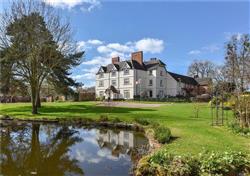Robert FOLEY 1624 - 1676
Ninth child and fifth son of Richard FOLEY 1580 - 1657 and Alice BRINDLEY 1579 - 1663
Born 1624, Dudley, Worcestershire
Died 1st December 1676, London, at an Inn
One surviving child recorded for Robert FOLEY and Anne BLURTON 382
Robert Foley (ironmonger)
From Wikipedia,
Robert Foley (baptised 19 September 1624; died 1 December 1676) of Stourbridge was a son of Richard Foley, the most important ironmaster of his time in the west Midlands, by his second marriage (to Alice Brindley).
In contrast with other members of the family who became ironmasters, Robert Foley became an ironmonger, that is, a person who organises the manufacture of finished ironware and sells it. In doing so he may have been taking over that aspect of his father's business, just as his older brother Thomas Foley had taken over their father's ironworks. Shortly after the English Restoration, Foley obtained a contract from the Navy Board to supply ironware to several dockyards.
His house at Stourbridge and estate at Netherton in Dudley were given him by his father. He probably mined coal in his land at Yorks Park, near Netherton around 1660, but left others to extend mines into neighbouring land. However, he bought the manor of Kenswick in Knightwick, Worcestershire, himself in 1669.
He was High Sheriff of Worcestershire in 1671. He married first Anne Blurton in 1645 and was succeeded by his son, another Robert Foley. He married second Elizabeth Duppa.
Foley died on a business trip. He travelled from his home in Stourbridge to Bristol and then to London, where he died at his inn.
Sources: M. B. Rowlands, Masters and Men in the West Midlands metalware trades before the industrial revolution (Manchester University Press, 1975), 87-92.
'Parishes: Knightwick', Victoria County History, Worcestershire: volume 3 (1913), pp. 437-442. "Robert Foley"
Burkes Peerage.
Kenswick
Kenswick Manor
Kenswick lies across the main road from Worcester to Martley between Lower Broadheath and Wichenford. A land unit in its own right, it comprises The Manor, The Kedges, Kenswick Mill and barns (formerly in Hallow) and the more modern houses at Pig Bridge. Recently the former Manor of Woodhall was transferred from Hallow to Kenswick.
Described in many books as a ‘deserted mediaeval village’, there is actually no evidence on the ground or in the archives that would support this assumption. Although odd and unusual, its main historical interest is that it has kept its identity over the centuries despite only having two original properties - The Manor and The Kedges.
The history of Kenswick is not easy to follow or interpret. What is clear is that it is old.
■ It had a chapel / church attached to the manor and belonged to the extensive parish of St Helen’s, Worcester before the Norman Conquest of 1066.
■ It is named in Domesday 1086, when Wichenford is not.
■ Men signing themselves ‘..of Kenswick’ can be found as witnesses to many documents of the mediaeval period.
But, as a single unit, it was never a parish; it is labelled on an 18th century map as ‘a Bailiwick of Wichenford’ i.e. was run by the Bailiff of Wichenford. In the 19th century a misreading by an historian of an alphabetic list of chapels tied it to Knightwick. There followed a protracted discussion that verged many a time on heated argument, between the Church Commissioners who had published the error, thereby giving it credence, the vicar of Knightwick, who pointed out the error, Admiral Britten of Kenswick, who had to keep the warring parties apart and Rev Davenport of Wichenford who resolutely followed the argument to the end, when it was agreed an error had been made and that Kenswick should form part of Wichenford. The sour relations left at the end were instrumental in the Brittens of Kenswick turning away from Wichenford church and sponsoring the building of the church in Lower Broadheath, whose spire to this day bears a weathervane in the shape of a ship in honour of the Admiral.
Kenswick’s own chapel attached to a building in the grounds of the Manor was still there in the early 19th century and a drawing of it can be found in the Prattinton Collection at the Society of Antiquaries. It was pulled down c 1860.
